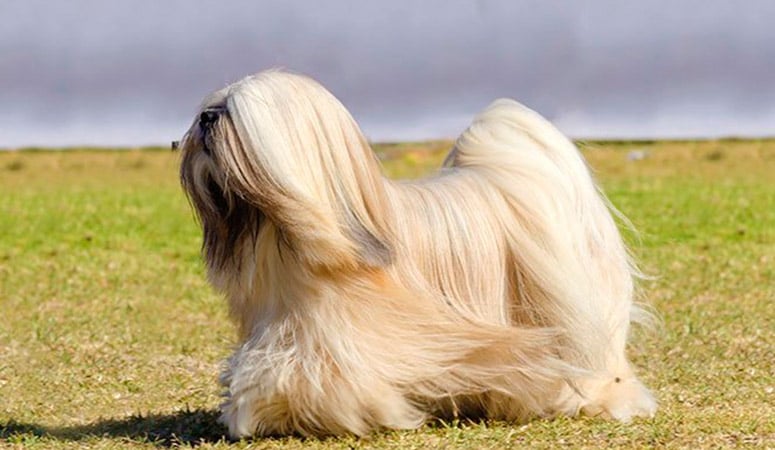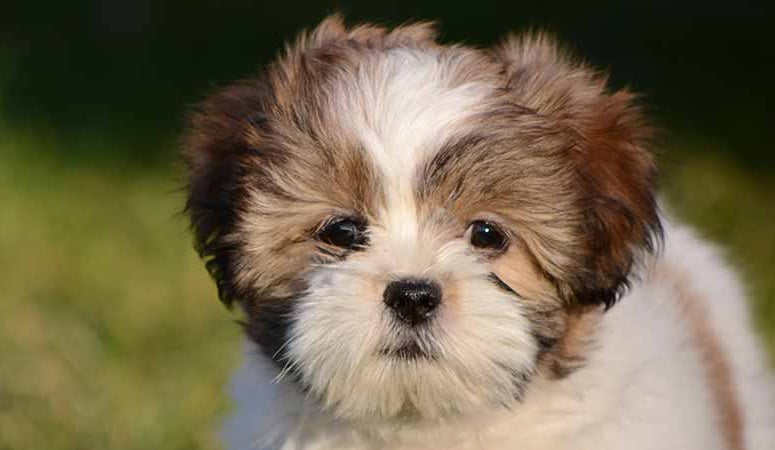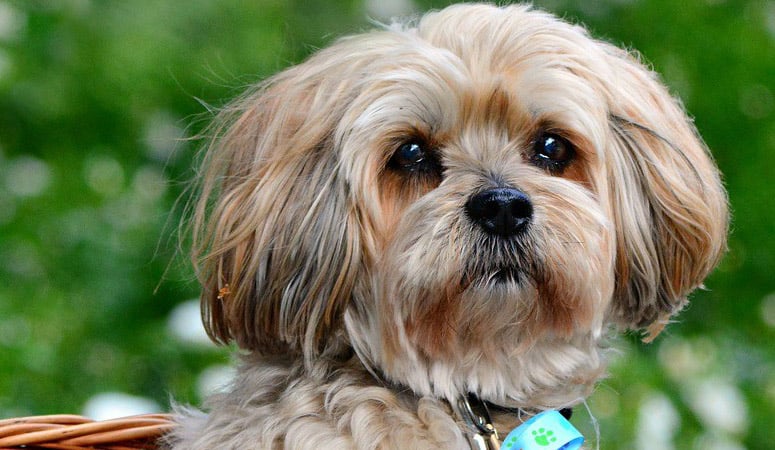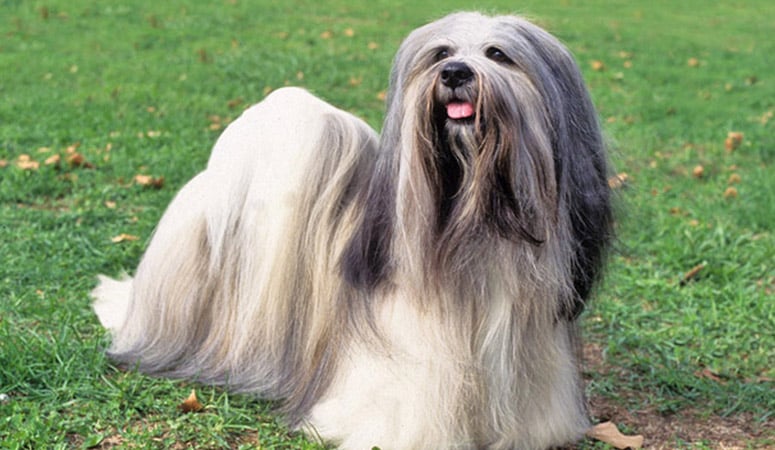Lhasa Apso
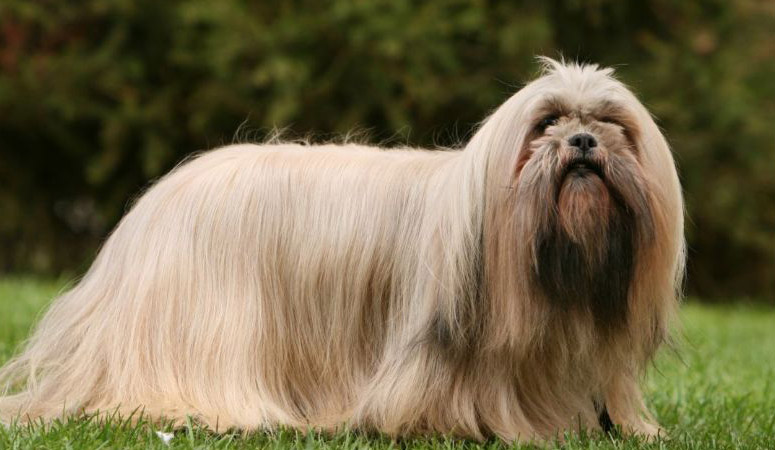
Here comes Lhasa Apso, known for a watchdog. Also good human companions nowadays. Aloof as they are, Lhasa Apsos can be friendly when people act nice to them. Responsible owners will groom them regularly not only for good appearance but for the health purpose.
| Other Names | Abso SEng Kye, Tibetan Apso |
| Color | All dog colors |
| Height | Males: 10-12 inches. Females: 9-11 inches. |
| Weight | Males: 13-18 pounds. Females: 13-18 pounds. |
| Life Span | 12-15 years |
| Personality | Confident, Smart, Comical |
| Exercise | Regular Exercise |
| Origin |
| Popularity | #78 |
| Groom Needs | 2-3 Times a Week Brushing/ Infrequent Shedding |
| Kids Friendly | No |
| Dog Friendly | Yes with supervision |
| Watch Dog | |
| Family Dog | |
| Litter Size | 4–6 puppies |
Lhasa Apso Pictures
Lhasa Apso Video
Introduction
You might not know a lot about the Lhasa Apso dogs, but those who know them and have them, adore them. These are dogs that prefer cold weather, preferring the indoors over the outdoors. Their coats need brushing every day and come in colors such as white, black, grizzle, black and tan, and different shades of brown ranging from light cream to deep cream, and rich Irish setter red. They stand around 11 inches at the shoulders and weigh around 17 pounds. Even though they prefer the colder weather, they should never be left outside just because it is possible that they will survive the cold. They are stubborn dogs but make excellent watchdogs because they are so protective. They struggle a bit with their breathing. It’s because their nostrils are often too small, and their windpipe narrow and undersized, causing their airways to be narrow and obstructed. Not only are they wonderful companion dogs, but they also love to find a special place in the home where they can ‘keep watch’ of things going on around them. They are happy with just a short walk of about 30 minutes each day.
Living with Lhasa Apso
It take owners some efforts to groom Lhasa Apsos, as they have long and lavish coats. Glamorous Lhasa Apsos can often be seen around show ring, yet it needs endless hours of grooming. So choosing a dog with easy-care coat is more suitable for owners with impatience. Brush them every day and brush all the way to the skin, so that there’s hardly any mats or tangles. If owners find it difficult, asking dog’s breeder for advice on grooming techniques can be a good choice. They hardly shed coats, so bath them every two to three weeks is enough. Ears should be checked regularly in case of irritations, infections, and wax build up. Their teeth should be brushed to avoid the existence of periodontal disease.
Lhasa Apsos are always full of energy. They would be happy if there’s space for them to run. Fenced yard, garden, lawn can be suitable places for Lhasa Apsos to take moderate exercise. Some dogs might choose to nap all day especially in hot or cold days. It’s time for owners to give directions to encourage Lhasa Apsos to run off some energy. Once-a-day brisk walk or indoor exercise is enough to keep them in good health. More strenuous exercise should be taken every week. Owners can meet Lhasa Apsos’ needs by playing fetch game with them, adding more pet-owner interactions and emotional connection. Scampers and runs can be suitable for Lhasa Apsos’ weekly exercise. Exercise brings pets not only physical health but mental health. Moderate outdoor exercise makes Lhasa Apso feel a sense of joy and peace.
Small as they are, Lhasas need food that comes with good protein and fat. If owners find it difficult, asking breeders for recommendations of which ingredients shoule be contained can be a good choice. Food with fat level above 14 percent is approriate. Slight overfeeding is not a problem. Owners will feel sympathy when dogs feel uncomfortable, which is a bad digestive outcomes. Inappropriate feeding method should have been avoided. Anyhow, the amount of dog food should be measured by dogs’ age. Cooked meat or a grain-free canned foods are suitable for them to eat, but some dangerous human food should not be available. The key point is to keep the frequency and time of everyday diet, so that Lhasa Apsos can thrive on consistency.
Basically, Lhasa Apsos are a healthy breed. But some are prone to have ear issues. Lavish and long coat can contribute to ear issues. So keep areas around ears dry after it gets wet is of great importance. Owners should try to make sure the dryness round dog’s ear, lessening the existence of health problems, such as irritations, infection, and wax build up. And they’re prone to get sebaceous adenitis, which can lead to irritations and infections. The symptoms of sebaceous adenitis are the loss of hair, itching and skin-flaking. Genetic kidney problems are likely to appear. So testing is neccessory for dogs, as owners can decide the breeding plans of dogs in advance.
Total Annual Cost: $2139
Cost is estimated for the first year and may vary depending on many factors, such as dog food, health care, leash, collar, licensing, possible fencing, crates, training and obedience classes, dog-walking, grooming, treats, toys, flea, tick, and heart-worm meds, microchips, etc.
Regally indifferent to strangers while passionate to owners. As Lhasa Apsos love to obey instructions directed by familiar people, training can be easy. For thousands of years, Lhasa Apsos are developed into watchdogs and companions. As Lhasa Apsos are developed a sense of ownership for his territory and family. So Lhasa Apsos nowadays can be trained easily. It takes little efforts to train Lhasa Apsos if trainers act friendly to them instead of a human leadership manner. Early socialization is important. Not only intimate with owners, Lhasa Apsos should be trained to be friendly to strangers. It’s necessary as Lhasa Apsos will cause no danger to the visits of groomer and vets when they need groomings or treatments. This training will come in handy.
History
These cutie-pies come from Tibet. It is thought this breed goes back as far as 800 BC. The Buddhists believe that these dogs are the reincarnation of Dalai Lamas – some lived in the home of lamas in the mountains. They lived with monks, serving them in the monasteries. The Tibetan Buddhists believe in reincarnation, and in the stages of reincarnation, a dog often comes right before a human. According to them, the souls of priests or lamas are frequently reborn as Lhasa Apsos just before being reborn as humans!
The two world wars just about wiped out this breed, but new blood was imported and by 1956, the breed had grown sufficiently in strength again.
Six Lhasa Apso dogs were brought to the UK by Colonel Eric Bailey and many attribute the beginnings of the dog in England by Colonel Bailey.
In the 1930s the Lhasa Apso came to the Americas. Charles Suydam Cutting received Lhasa Apsos as a gift from the Dalai Lama when he was in Tibet. He and his wife are personally responsible for introducing this wonderful breed to the United States.
The first Lhasa Apso dogs were registered at the AKC in 1935.
Helpful Information
Breed Club: The Amenican Lhasa Apsos Club
Breed Club Link: https://www.lhasaapso.org/
Breed Club Rescue: merican Lhasa Apso Club (ALAC) Rescue
Breed Club Rescue Link: http://lhasaapsorescue.org/site/index.php

